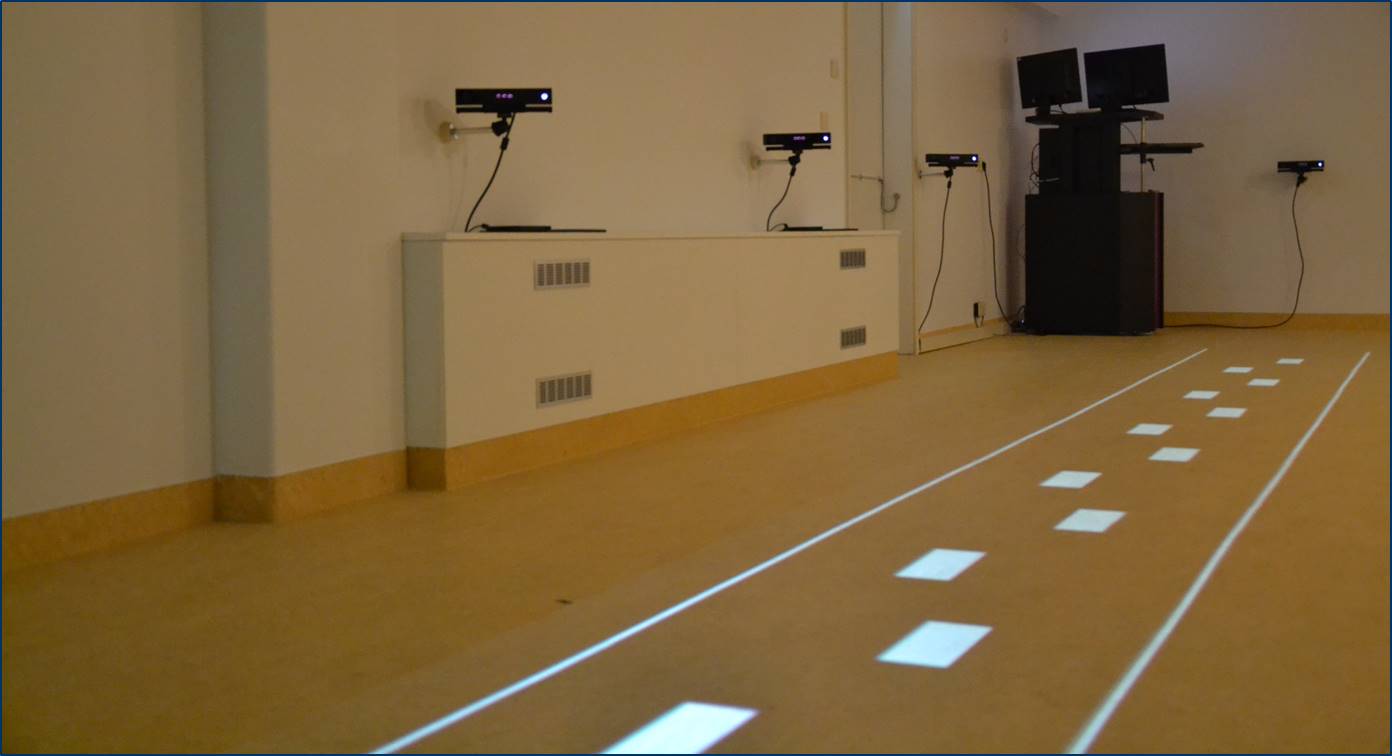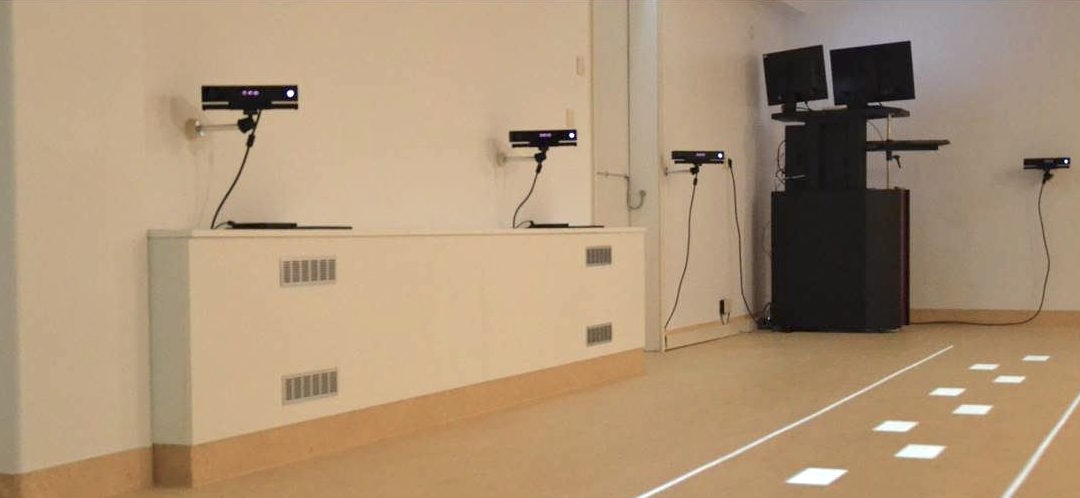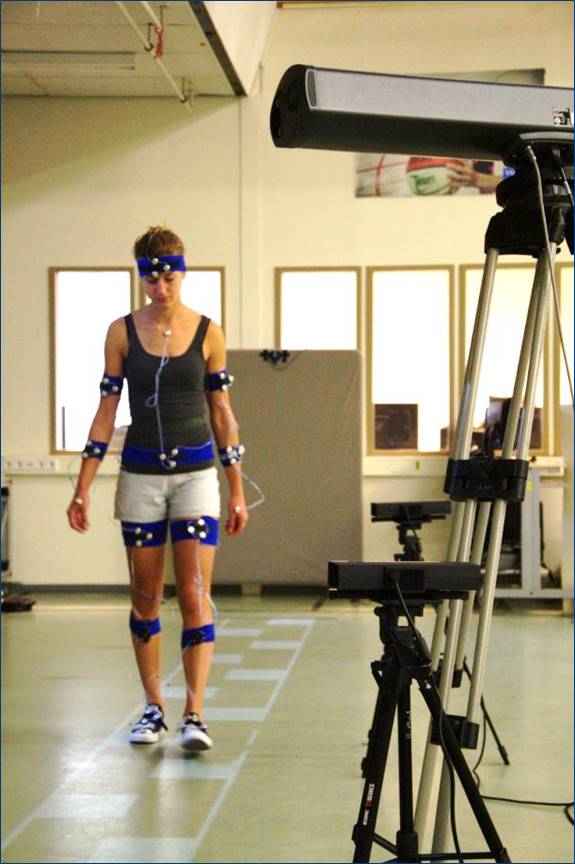The Interactive Walkway: validation and clinical implementation of an assessment tool of walking and walking adaptability
Falling during walking is a major social problem. Most falls occur due to incorrect foot placement with respect to irregularities in the walking surface, by which one trips, slips or loses balance. The risk of falls during walking increases when step adjustments have to be made under time pressure and/or in combination with a cognitive task. Currently, people are referred to a falls prevention program when they have already experienced a fall, but this reference is one fall too late. There is a need for an early detection method to assess the aforementioned risk factors and identify those at risk of falling to direct them to a targeted falls prevention program.
Project Details
Start Date: Jun. 2014
Duration: 4 Years
Funding: NWO Exact Sciences

The Interactive Walkway
With the newly developed Interactive Walkway it is technically possible to assess the aforementioned risk factors for walking related falls in a quick, simple, objective and systematic manner. The Interactive Walkway is an instrumented augmented reality walkway and uses multiple Microsoft Kinect sensors for motion registration. Kinect technology is a patient-friendly manner to register motions of a large number of body segments in real-time, without attaching markers or sensors to the body. The Interactive Walkway uses a projector which enriches the surface with meaningful visual objects, such as obstacles and targets. This visual context can be presented in a movement-dependent manner (real-time coupling between Kinect output and augmented reality). Therefore, an obstacle can be presented exactly at the predicted foot placement position of the next step. In addition to the ability to avoid obstacles, many other functional aspects of walking can also be assessed on the Interactive Walkway, such as the ability to turn under time pressure, the ability to make sudden stops, the ability to walk an imposed speed, the ability to accurately place the feet on targets, the ability to walk with a narrow base of support, the ability to perform a cognitive dual task while walking, etcetera. With the Interactive Walkway it is possible to assess walking of patients without the use of markers or sensors, but also to assess the ability to adapt walking to the presented augmented reality context.



